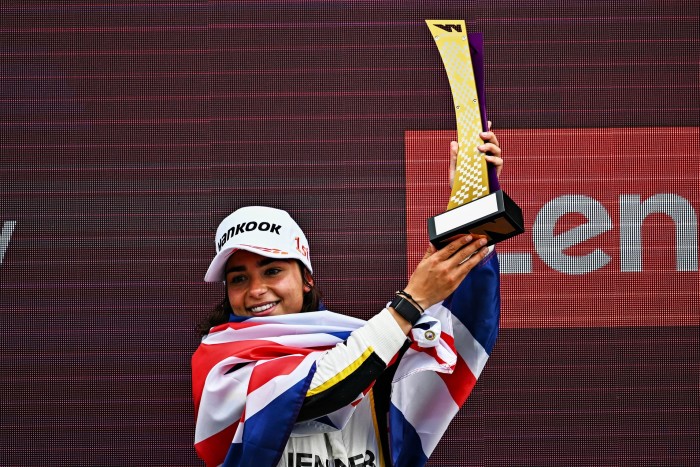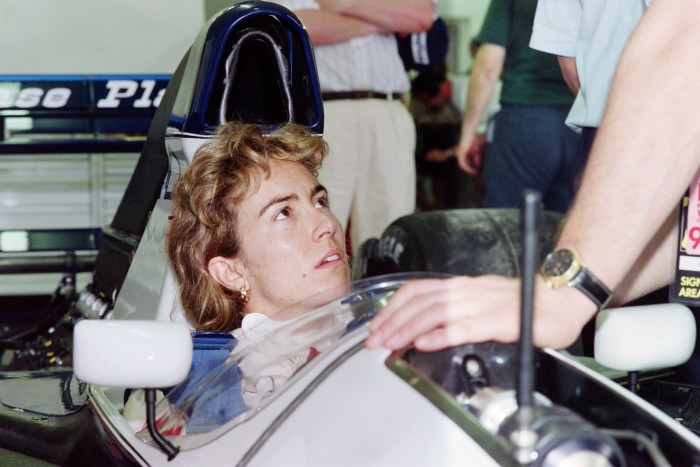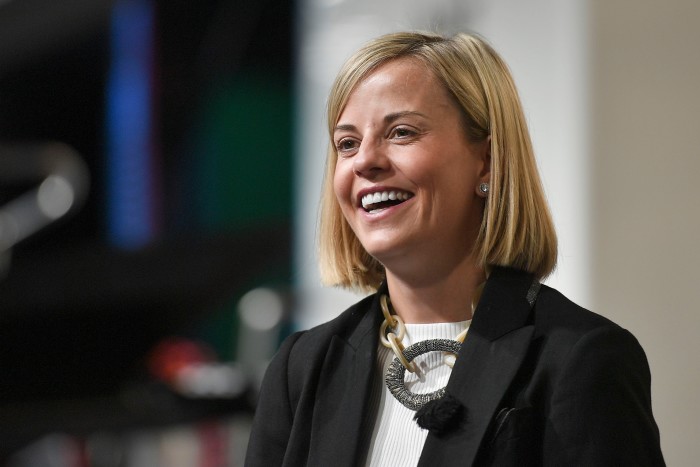F1 starting grid remains distant goal for women drivers

Roula Khalaf, Editor of the FT, selects her favourite stories in this weekly newsletter.
It has been 30 years since Giovanna Amati tried unsuccessfully to qualify for the Brazil Grand Prix — the last time a woman came close to appearing in a Formula One race.
Many in the sport, including driver Lewis Hamilton and F1 chief executive Stefano Domenicali, say they want to see a female driver on the grid. But, with the W Series, the all-female championship, running into financial difficulties, and its three-time winner Jamie Chadwick now exploring options outside F1 for her next challenge, that goal appears as distant as ever.
“Seventy-five women have been to space, and only two women have qualified and started a race since F1 started,” says Kate Beavan, a 20-year veteran of the sport and part of ‘>= More Than Equal’, an initiative to find the sport’s first female champion. “Female participation in motorsport is woefully low. Female success at the senior level is practically non-existent.”
Money remains a huge barrier. Motorsport is an expensive endeavour, even at junior levels, which means anyone seeking to make it to the top needs support — either from a family with deep pockets or corporate sponsors willing to take a chance on a young driver.

“It’s hard for everyone,” says Chadwick. “To progress all the way through the ranks isn’t easy. But, because there are so few women in the sport, and very few have had success, it’s still seen as a bit of a risk and, therefore, it isn’t easy to secure that backing to progress.”
Funding has been a longstanding issue. Susie Wolff, a former development driver for F1 team Williams, says that, while motorsport is undergoing a big cultural shift towards diversity — with more women taking up roles as mechanics and engineers — commercial pressures still limit opportunities for female drivers.
“Many people presume that this diversity story, this investment in women’s sport, it’s a given,” she says. “Well, it’s not. When I was at Williams, I had the chance to get into a race seat if I had managed to find funding. There wasn’t the money then, and I don’t think that’s changed massively.”

In a sport awash with sponsorship cash, money has also been a problem at events for women in racing. The W Series was forced to curtail its season in October because of financial problems. The final three races were cancelled, with the organisers instead switching their focus to fundraising.
Some in the industry think female drivers will only attract funding once they have proved they are fast enough to challenge the men. To have more chance of this, girls may need to become involved in motorsport from a younger age, and be given the same opportunities for development as their male counterparts.
“In the end, we are a very performance-based environment. You are judged on how quick you are,” says Wolff, who recently stepped down as chief executive of the Venturi Formula E team. “To get to F1, you need to be very talented, you need to be very, very quick. If a fast young girl were to come along who was quick, the doors would open based on her talent.”
The question, then, facing those who want to see a woman in the driver’s seat is how to develop the talent that can compete with the men on pace.
Opinions on this subject vary. Many see a need to build up young female drivers’ experience. Others identify physical, cultural and psychological challenges.
“We definitely need to nurture talent from a very young age,” says Chadwick. “We need to provide more funded opportunities for young girls progressing through the ranks, because that is still a big barrier for everyone. We also need to create more role models — without tokenism — to inspire the next generation.”
The >= More Than Equal project, which is backed by former F1 driver David Coulthard and Czech billionaire Karel Komárek, hopes to find a competitive female driver within eight years. It will begin by carrying out data-driven research into the issues women face in the industry.
Most agree that one of these is the difficulty in starting early enough to create a very large talent pool of female drivers, from which a star can emerge.
“It takes a particular magic to become an F1 driver, and certainly to become a Lewis Hamilton or a Max Verstappen,” says Beavan. “It’s finding a needle in a haystack.”
At F1 itself, plans are being drawn up for a new women’s category that could provide a route into Formula Three and, ultimately, F1. This new format would target younger drivers (aged 16 and upwards), probably driving Formula Four cars, and could be launched as soon as next year.
“It’s clear that, as a sport, we will have one category, women and men . . . racing together”, says Domenicali, F1 chief executive. “Our duty is to make sure there are all the fundamentals [in place] to enable [women] to start from quantity to find quality.”
Despite the challenges ahead, Wolff is optimistic. “This isn’t a closed-off world that’s very male-dominated,” she says. “It was, but it’s moving in the right direction.”
Comments